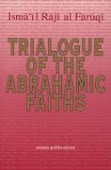Refuting Dr Naik's Claim of Jihad in Bhagwad Gita
A Reply to Dr. Sohail Ahmed
by Aman Garg
14 January, 2006
Dear Dr. Sohail Ahmed.
I had a chance to look at your mail to Ali Sina in which you have stated that Mr. Sina is 'afraid' of meeting Dr Naik. You have also stated that Ali Sina quotes the Quran out of context. If that is the case, can you please enlighten us as to what the 'correct' context is? Moreover you had stated that Dr ZN doesn't even quote scriptures belonging to other religions out of context and you referred to his lectures on 'SIMILARITIES BETWEEN HINDUISM AND ISLAM' and his verse from Bhagwad Gita on 'Jihad'.
I heard this lecture too. Let us analyze what Dr Zakir Naik had to say about Bhagwad Gita and Jihad.
He says that Shri Krishna implores Arjuna to fight against his cousins in the battle of Kurukshetra. Krishna also tells Arjuna that if he dies in the battle, he will go heaven and if he wins, he will enjoy the power on earth and this is exactly what Allah told to the Muslims during their battle against mushriks. Dr Naik also added that in the battle of Kurukshetra, Krishna asks Arjuna to fight a 'battle of Truth' the same way as Allah revealed to the Muslims through Muhammad to fight the 'battle of truth'. Then Dr Zakir Naik finally says "If today I say that Krishna asked Arjuna to kill his cousins, then I will be quoting the Gita out of context, right?" Wow what an analysis.
If you read the Mahabharat, you will see that the Pandavas and Kauravas were cousins. The Kauravas invited the Pandavas for a game of dice which the Kauravas won through deceit with the help of their uncle Shakuni. The Pandavas were humiliated and their wife, Draupadi, was disrobed in front of everybody. After the humiliation, the King Dritrashtra (father of Kauravas) gave back everything that the Pandavas lost fearing the curse of Draupadi. Now, again the Pandavas were invited for a game of dice for the second time which the Kauravas once again won through deceit. Now, the Pandavas were asked leave their kingdom and go to the forest for 14 years. Now, as per the agreement, the Pandavas, after 14 years, came back to their cousins claiming their kingdom. The Pandavas even sent Krishna as a messenger of peace. Kauravas ridiculed Krishna and told him that EVEN A NEEDLE POINT OF LAND will not be given when Krishna, on behalf of Pandavas, asked for just 5 villages and not even the whole kingdom. So THAT was when the war began when all doors of peace were totally shut. Whether this is historically true or not is not the point here. I have just presented the case as it is.
Now, if we see the battle against mushriks, there is no historical evidence (even in the Quran or the Hadiths) to prove that the kaafirs were the ones who broke the treaty between them and the Muslims. It was the Muslims who started the war. SO THEY WERE THE FIRST OFFENDERS. After entering in to Mecca, the Muslims gave 4 months time for all the non-Muslims to convert or else face the consequences (which meant paying an unreasonable tax called Jiziya or face death). It was during this war that Allah revealed verses that say 'Kill them where ever you find them'. But there were certain commonly agreed upon ethics for the war of Kurukshetra.
The two Supreme Commanders met and framed "rules of ethical conduct" for the war. The rules included:
1. Fighting must begin no earlier than sunrise and end exactly at sunset.
2. Multiple warriors may not attack a single warrior.
3. Two warriors may "duel," or engage in prolonged personal combat, only if they carry the same weapons and they are on the same mount (no mount, a horse, an elephant, or a chariot).
4. No warrior may kill or injure a warrior who has surrendered.
5. One who surrenders becomes a prisoner of war and a slave.
6. No warrior may kill or injure an unarmed warrior.
7. No warrior may kill or injure an unconscious warrior.
8. No warrior may kill or injure a person or animal not taking part in the war.
9. No warrior may kill or injure a warrior whose back is turned away.
10. No warrior may strike an animal not considered a direct threat.
11. The rules specific to each weapon must be followed. For example, it is prohibited to strike below the waist in mace warfare.
12. Warriors may not engage in any "unfair" warfare whatsoever.
* Note : This is a personal letter to refuse Dr Naik opinions or comments on Bhagavad Gita. He is the one of Ahmad Deedat's student in Comparative Religion field.
0 Comment




